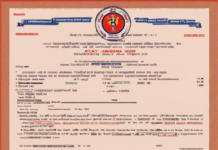Introduction
The Magalir Urimai Thogai movement is a significant milestone in the history of women’s rights in India. Originating in Tamil Nadu, this movement is synonymous with the fight for gender equality, empowerment, and justice. The term “Magalir Urimai Thogai” translates to ‘women’s rights movement’ in English, and it encapsulates the struggle of women in various spheres of life. This blog post aims to explore the origins, impact, and significance of this movement in shaping the narrative of women’s rights in India.
Origins of the Magalir Urimai Thogai Movement
The Magalir Urimai Thogai movement traces its roots back to the early 1980s in Tamil Nadu, India. It was a response to the systemic oppression and discrimination faced by women in various aspects of society, including education, employment, and social status. The movement gained momentum through the efforts of grassroots organizations, women’s rights activists, and progressive thinkers who sought to challenge the status quo and advocate for gender equality.
Key Objectives of the Movement
The primary objective of the Magalir Urimai Thogai movement was to empower women and secure their rights in a patriarchal society. Some of the key goals of the movement included:
- Promoting gender equality in all spheres of life, including education, employment, and politics.
- Creating awareness about women’s rights and encouraging women to assert their rights.
- Challenging social norms and practices that perpetuate gender-based discrimination and violence.
- Advocating for legislative reforms to protect and promote women’s rights at the national and state levels.
Impact of the Magalir Urimai Thogai Movement
The Magalir Urimai Thogai movement has had a profound impact on the status of women in Indian society. Some of the key outcomes and impacts of the movement include:
- Increased awareness: The movement has raised awareness about women’s rights issues and sparked conversations about gender equality and empowerment.
- Policy changes: The movement has led to significant policy changes, including the enactment of laws to protect women from domestic violence, harassment, and discrimination.
- Empowerment of women: The movement has empowered women to assert their rights, pursue education and employment opportunities, and challenge gender stereotypes.
- Community support: The movement has mobilized community support for women’s rights and highlighted the importance of solidarity and collective action in advancing gender equality.
Challenges and Future Directions
While the Magalir Urimai Thogai movement has made significant strides in promoting women’s rights in India, challenges persist. Some of the key challenges facing the movement include:
- Deep-rooted patriarchy: Patriarchal attitudes and practices continue to hinder progress towards gender equality and women’s empowerment.
- Violence against women: Women in India still face high levels of violence, including domestic violence, sexual harassment, and gender-based violence.
- Intersectionality: The intersection of gender with other forms of discrimination, such as caste, class, and religion, creates additional barriers for marginalized women.
- Access to resources: Many women in India lack access to resources such as education, healthcare, and economic opportunities, which hinders their ability to assert their rights.
To address these challenges and advance the cause of women’s rights, the Magalir Urimai Thogai movement must continue to advocate for:
- Comprehensive gender-sensitive policies at the national and state levels.
- Community engagement and awareness raising on women’s rights issues.
- Empowerment programs that build women’s capacity and agency to assert their rights.
- Intersectional approach to address the multiple and intersecting forms of discrimination faced by women.
Frequently Asked Questions (FAQs)
- What is the significance of the Magalir Urimai Thogai movement in the context of women’s rights in India?
-
The Magalir Urimai Thogai movement is significant as it has been instrumental in raising awareness about women’s rights issues, advocating for policy changes, and empowering women to assert their rights in Indian society.
-
How has the Magalir Urimai Thogai movement impacted women’s empowerment in India?
-
The movement has empowered women to challenge gender norms, pursue education and employment opportunities, and advocate for their rights in various spheres of life.
-
What are some of the key challenges facing the Magalir Urimai Thogai movement in its quest for gender equality?
-
Some key challenges include deep-rooted patriarchy, violence against women, intersectional discrimination, and lack of access to resources for marginalized women.
-
What are some of the policy changes advocated for by the Magalir Urimai Thogai movement to protect women’s rights?
-
The movement has advocated for laws to protect women from domestic violence, harassment, and discrimination, as well as gender-sensitive policies at the national and state levels.
-
How can individuals support the Magalir Urimai Thogai movement and contribute to women’s rights in India?
- Individuals can support the movement by raising awareness about women’s rights issues, challenging gender stereotypes, advocating for gender equality, and supporting initiatives that empower women in their communities.







